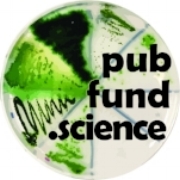Algal Wastewater Remediation
Across the country, from Florida to Alaska, algal blooms in local waterways present a growing problem. Many of these blooms are toxic to humans and pets, and the problem is only likely to become more pronounced as global temperatures rise. We currently know little about the purpose of one of the most commonly secreted toxins, microcystin, and little about the genetics of the cyanobacteria that produce it.
In order to preserve our natural watersheds, we will need better ways to process wastewater to reduce the amount of fertilizer pumped into our rivers, lakes, and oceans. Algae is an excellent way to remove excess nutrients from wastewater, and can be further processed for use as fertilizer, fuel, and food.
Finding or engineering the best-performing strains of algae for this job will be crucial on a warming planet. Research into advanced wastewater processing also has applications for astronauts on a future Mars or moon base. Conserving important organic resources and living sustainably will be crucial in such nutrient-poor environments.
Increasing public exposure to the concept of recycling wastewater, especially from a scientific perspective, will also get people used to the idea. Reducing the "ick-factor" associated with treating wastewater may be one of the most important challenges facing humanity in the 21st century.

